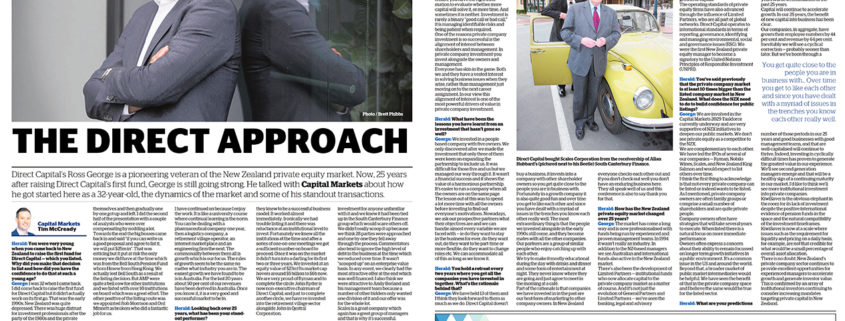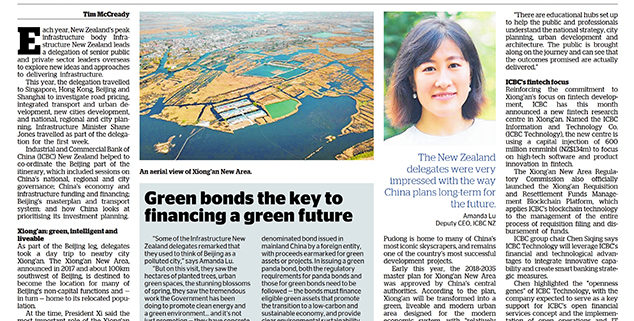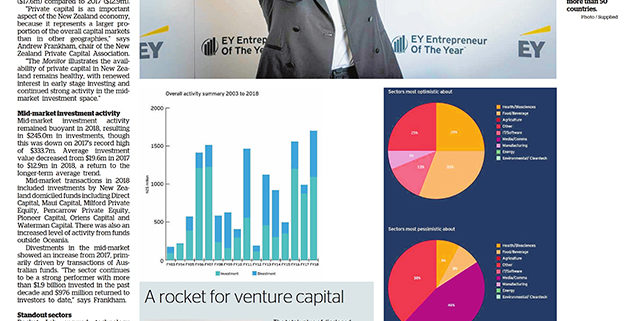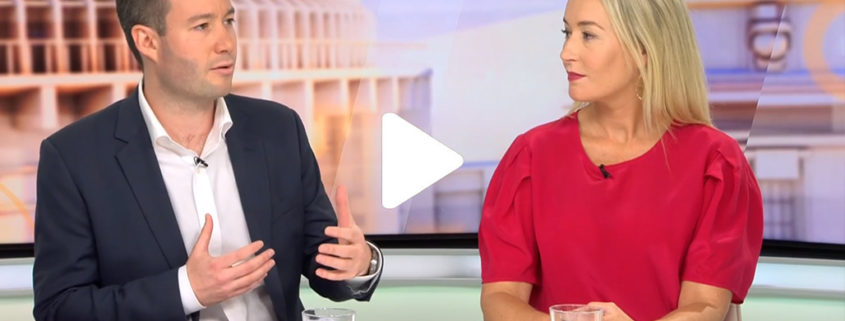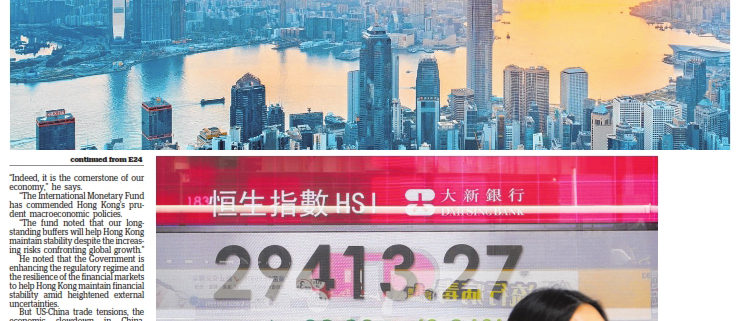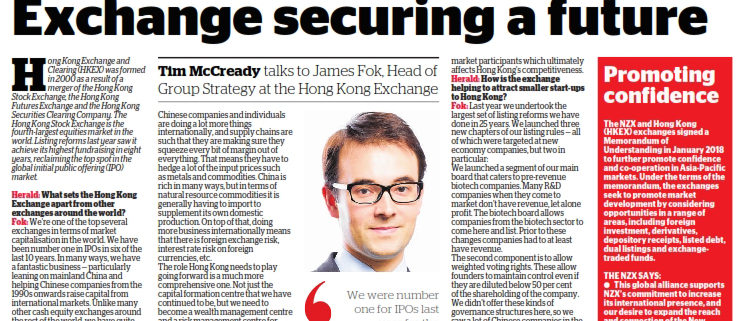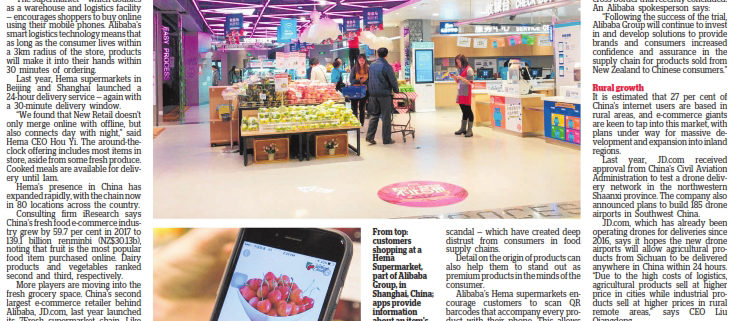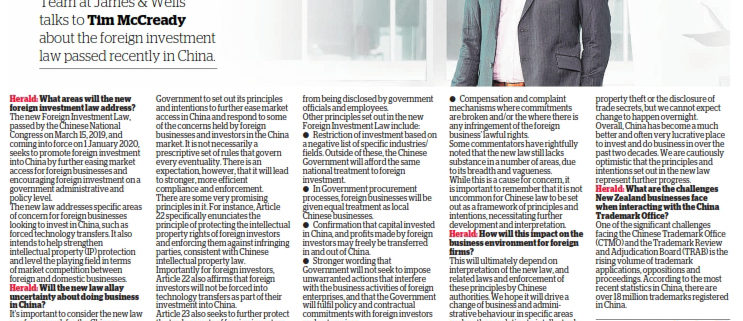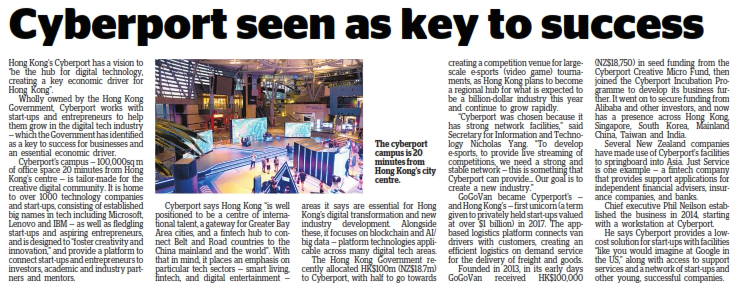Capital Markets: The Direct approach – an interview with Direct Capital’s Ross George (NZ Herald)
Originally published in the New Zealand Herald
Direct Capital’s Ross George is a pioneering veteran of the New Zealand private equity market. Now, 25 years after raising Direct Capital’s first fund, George is still going strong. He talked with Capital Markets about how he got started here as a 32-year-old, the dynamics of the market and some of his standout transactions.
Herald: You were very young when you came back to New Zealand to raise the first fund for Direct Capital — which you listed.
Why did you make that decision to list and how did you have the confidence to do that at such a young age?
George: I was 32 when I came back. I did come back to raise the first fund for Direct Capital but it didn’t actually work on its first go. That was the early 1990s. New Zealand was quite depressed. There was huge distrust for investment professionals after the party of the 1980s and the private equity industry didn’t exist in New Zealand. There were a couple of venture capital funds including a Government one called Greenstone. We had to educate investors what private equity was. It was called direct investment back then.
I then convinced my varsity mate Mark Hutton to come back from Monaco to join Direct Capital and Bill Kermode, who I knew from school, to do the same. It got off the ground once the three of us teamed up. We were all young but we had confidence because I came from the industry, Mark was in a senior financial position in Monaco and Bill was well known in Wellington where all the institutions were.
The listing was a happenstance. We planned a private fund of $50m which was quite a lot at the time. The listing came about in a funny way actually. I was doing a presentation to about eight people in AMP in Wellington in the middle of which they all started talking amongst themselves and then gradually one by one got up and left. I did the second half of the presentation with a couple of analysts who were over compensating by nodding a lot. Towards the end the big bosses came back in and said “if you can write us a good proposal and agree to list it, we will put $25m in”. That was enticing but it put at risk the only money we did have at the time which was from the Bell South Pension Fund whom I knew from Hong Kong. We actually lost Bell South as a result of the listing decision. But AMP were quite a bell cow for other institutions and we listed with over 10 institutions on board which was a great effort. The other positive of the listing route was we appointed Rob Morrison and Ord Minnett as brokers who did a fantastic job for us.
Herald: In the last few years Direct Capital has transitioned from the three tight partners — Mark Hutton, Bill Kermode and yourself — that ran the fund over the first 20 years. What made you decide to continue after their exit?
George: Yes, it was a great partnership and we are still joined at the hip in a number of investment vehicles.
While Bill left, Mark is still an owner, a director, and on the investment committee. He is not a full time executive but remains actively involved.
It’s actually been a continual succession process since we started through Gavin Lonergan, Tony Batterton, Simon Plowman through to the current owners, Travis Sydney, Heath Kerr, and Andrew Frankham. Hugh Cotterill, our new partner joins in June. We have got very good at succession because we have watched it in a lot in companies we invest in.
I have continued on because I enjoy the work. It is like a university course where continual learning is the norm. You can be dealing with a pharmaceutical company one year, then a logistics company, a retirement village operator, an internet market place and an engineering firm the next. The commonality between them all is growth which is our focus. The rules of growth seem to be the same no matter what industry you are in. The easiest growth we have found to be is in Australia. For the last 20 years about 50 per cent of our revenues have been derived in Australia. Once you know it, it is a very good and successful market to be in.
Herald: Looking back over 25 years, what has been your stand-out performer?
George: We don’t typically highlight individual companies but we’ve listed some of our companies and their performance is public record. Ryman Healthcare has been an obvious highlight. We invested in it in 1996 when it had a small number of South Island retirement villages. The industry wasn’t that understood at the time as it was in its infancy. The people however were the best we had seen. John Ryder and Kevin Hickman had almost all of the bases covered between them. They had different skills but they were good mates and a great business combo. It wasn’t a popular investment at the time as people thought of it as property development. The drivers of this industry are far from it and we think they still are. Building the villages is a short period within a retirement village’s life. It is a people and healthcare industry once it is up and running.
John and Kevin wanted additional capital so they could accelerate what they knew to be a successful business model. It worked almost immediately. Ironically we had trouble listing it and there was reluctance at an institutional level to invest. Fortunately we knew all the institutions at the time and after a series of one-on-one meetings we got a sufficient number on board to proceed. Once it was on the market it didn’t turn into a darling for its first two or three years. We invested at an equity value of $23m! Its market cap hovers around $5 billion to $6b now.
We are very proud of Ryman and to complete the circle John Ryder is now non-executive chairman of Direct Capital, and just to complete another circle, we have re-invested into the retirement village sector alongside John in Qestral Corporation.
Herald: Scales Corporation is absolutely booming. You scooped it up from the South Canterbury Finance receivership in 2011, later listing it on the NZX — which paid off very well. Was that investment always a no-brainer?
George: We knew Scales very well for 5 — 10 years before we got to invest in it. In fact, our offer to invest in 2011 was our fourth attempt. We could never get the (Allan) Hubbard Group over the line.
It was put up for sale through the South Canterbury Finance (SCF) receivership and ironically (again) we absolutely struggled to get into that sales process.
The receiver had high valuation ambitions and Goldman Sachs thought we had insufficient money to buy it. Although that wasn’t completely true we understood their view so teamed up with ACC and NZ Super in a consortium and were then allowed into the process. We knew Scales was not a straight forward investment for anyone unfamiliar with it and we knew it had been tied up in the South Canterbury Finance group which would scare others off.
We didn’t really scoop it up because we think 28 parties were approached and one by one they fell away through the process. Commentators also tend to ignore the high level of debt in the business at the time which we reduced over time. It wasn’t “scooped up” on an enterprise value basis. In any event, we clearly had the most attractive offer at the end which was well financed. I also think we were attractive to Andy Borland and his management team because a number of other bidders only wanted one division of it and our offer was for the whole lot.
Scales is a great company which again has a great group of managers and that is why it’s successful. The investment was in no way a no-brainer in fact it was a very difficult investment to make for all of the reasons above.
Herald: Which company has been the biggest turnaround challenge?
George: It’s one of the most common questions we get asked and we always disappoint by not answering it but the simple truth is that we are always investing into private companies alongside other shareholders, often family groups, and management and our partners are usually quite private individuals. They expect their privacy to be respected and we honour that. In fact, many owners tell us that is the reason they prefer private equity over other options.
But of course very few businesses travel in a straight line of success. Private companies are just as subject to economic and business cycles as anyone. When business gets difficult it is often due to changes in industry structure or risks that do in fact eventuate. Occasionally you have to accept that what you invested in is different to what you thought it was. Thankfully we have delivered very good returns to our investors for 25 years because those situations are the exception, not the norm. When these situations do occur you have to ensure you have the right information to evaluate whether more capital will solve it, or more time. And sometimes it is neither. Investment is rarely a binary “good call or bad call,” it is managing identifiable risks and being patient when required.
One of the reasons private company investment is so successful is the alignment of interest between shareholders and management. In private company investment you invest alongside the owners and management.
Everyone has skin in the game. Both we and they have a vested interest in solving business issues when they arise, rather than management just moving on to the next career assignment. In our view this alignment of interest is one of the most powerful drivers of value in private company investment.
Herald: What have been the lessons you have learnt from an investment that hasn’t gone so well?
George: We invested in a people based company with five owners. We only discovered after we made the investment that only three of them were keen on expanding the partnership to include us.
It was difficult for those five and us but we managed our way through it. It wasn’t a financial success and it shows the value of a harmonious partnership. It’s easier to run a company when all the owners are on the same page.
The lesson out of this was to spend a lot more time with all the owners before investing to find out everyone’s motivations. Nowadays, we ask our prospective partners what their objectives are and we can handle almost every variable we are faced with — ie do they want to stay in the business for ever, do they want out, do they want to be part-time or more flexible, do they want to change roles etc. We can accommodate all of this as long as we know it.
Herald: You hold a retreat every two years where you get all the companies you have invested in together. What’s the rationale behind that?
George: We have held 13 of them and I think they look forward to them as much as we do. Direct Capital doesn’t buy a business, it invests into a company with other shareholder owners so you get quite close to the people you are in business with. Fortunately in a growth company it is also quite good fun and over time you get to like each other and since you have dealt with a myriad of issues in the trenches you know each other really well. The most extraordinary thing is that the people we invested alongside in the early 1990s still come, and they become mates with all the other companies.
Our partners are a group of similar people who enjoy catching up with each other.
We try to make it mostly educational during the day with drinks and dinner and some form of entertainment at night. They never know where they are going and just agree to meet in the morning at a café.
Part of the rationale is that companies we have invested in in the past are our best form of marketing to other company owners. In New Zealand everyone checks each other out and if you don’t check out well you don’t have an enduring business here. They all speak well of us and this conference is also to say thank you for that.
Herald: How has the New Zealand private equity market changed over 25 years?
George: The market has come a long way and is now professionalised with funds being run by experienced and proven management teams. In 1994 it wasn’t really an industry. In addition to the NZ-based managers we see Australian and international funds also active in the New Zealand market.
There’s also been the development of Limited Partners — institutional funds who now allocate capital to the private company market as a matter of course. And it’s not just the evolution of General Partners and Limited Partners — we’ve seen the banking, legal and advisory community grow enormously to service the industry.
And a huge benefit of this is that company owners have also become much more familiar with private equity and understanding of the benefits a financial partner can bring to their business. This was something we used to have to explain to them. Today, a sell down or introduction of a financial partner is a common and accepted (and often preferred) option for business owners thinking about growth or capital.
The operating standards of private equity firms have also advanced through the influence of Limited Partners, who are all part of global networks. Direct Capital operates to international standards in terms of reporting, governance, identifying and managing environmental, social and governance issues (ESG). We were the first New Zealand private equity manager to become a signatory to the United Nations Principles of Responsible Investment (UNPRI).
Herald: You’ve said previously that the private company market is at least 10 times bigger than the listed company market in New Zealand. What does the NZX need to do to build confidence for public listings?
George: We are involved in the Capital Markets 2029 Taskforce currently underway and are very supportive of NZX initiatives to deepen our public markets. We don’t see private equity as a competitor to the NZX.
We are complementary to each other. We have led the IPOs of several of our companies — Ryman, Nobilo Wines, Scales, and New Zealand King Salmon and would expect to list others over time.
I think the first thing to acknowledge is that not every private company can be listed or indeed wants to be listed. As I mentioned, private company owners are often family groups or comprise a small number of shareholders and are quite private people.
Company owners often have strategies that will take several years to execute. When listed there is a natural focus on more immediate performance. Owners often express a concern about their ability to remain focussed on longer term growth initiatives in a public environment. It’s a common issue in the US and around the world.
Beyond that, a broader market of public market intermediaries would be helpful. We have seen the benefit of that in the private company space and I believe the same would be true for the listed sector.
Herald: What are your predictions for the private equity market over the next five years?
George: We are 25 years old this year and have invested in 75 companies. In the larger mid-market area that we operate in we know there are close to 1000 private companies that are of a size that we could invest into. We’ve barely scratched the surface. Of course those companies need a catalyst to introduce a financial partner — whether it is to fund growth or succession. I think the next five years will be a continuation of the past 25 years.
Capital will continue to accelerate growth. In our 25 years, the benefit of new capital into business has been clear.
Our companies, in aggregate, have grown their employee numbers by 44 per cent and revenue by 64 per cent. Inevitably we will see a cyclical correction — probably sooner than later. But we’ve been through a number of those periods in our 25 years and good businesses with good management teams, and that are well-capitalised will continue to thrive. Indeed, investing in cyclically difficult times has proven to generate the greatest value in our experience.
We’ll see second generation managers emerge and that will be a healthy sign of a continuing maturity in our market. I’d like to think we’ll see more institutional investment into private companies.
KiwiSaver is the obvious elephant in the room for its lack of investment despite the positive international evidence of pension funds in the space and the natural compatibility of the investment timeframes.
KiwiSaver is now at a scale where issues such as the requirement for liquidity and pricing on a daily basis, for example, are not that credible for what would be a small percentage of overall asset allocation.
There is no doubt, New Zealand’s private company sector continues to provide excellent opportunities for experienced managers to accelerate growth and generate investor value. This is confirmed by an array of institutional investors continuing to consider increasing mandates targeting private capital in New Zealand.

